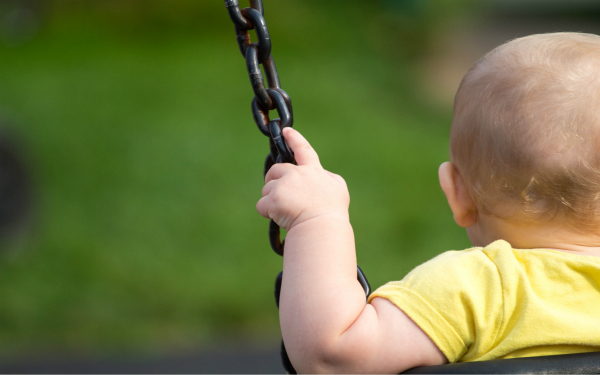
by Andy Bilson
Sixteen years ago government announced its intention to increase adoption and introduce special guardianship (guardianship) to reduce the numbers in care. More recently government has again called for the number of adoptions to be doubled.
The aim of this policy is to reduce the number of children looked after, especially those who spend long periods in care, and instead to find permanent homes through one of these two means. By 2016 the rate of adoptions had more than doubled since the late 1990s and when guardianship is added four times as many children left care to these permanent placements (see figure 1).
Figure 1: Annual number of children ceasing to be looked after because they were adopted or discharged to special guardianship
Between 2001 and 2016 over 80,000 children left the care system to permanent placements, 58,890 to adoption and 21,870 to guardianship, though many guardians were family members. Over the same period the number of children in care has increased by 20% and is higher than for 30 years.
Increasing numbers of children separated from parents
These trends mean that there are clearly more children separated from their parents than before the policy, but it is hard to work out just how many. Government provides statistics on how many children were looked after on the 31st March each year, we don’t have the same statistics for children who were living with adoptive parents or guardians.
The graph below shows, for the first time, estimates of the number of children who left care for adoption or guardianship who were still aged under 18 on 31st March. This however includes some children no longer with adoptive parents or guardians because their placement broke down.
Figure 2 shows that the number of those who had been adopted or on guardianship rose from 29,000 children on 31st March 2001 to 73,000 in 2016 and, even if the annual rate of adoptions and guardianships stay at the 2016 level rather than doubling as the government would like, numbers will increase to over 110,000 in the next 10 years.

Figure 2: Estimated number aged 0-17at 31st March 2000-2016 who have been adopted or placed in guardianship and projection if 2016 rate of adoption and guardianship is maintained
Differences in practice
This picture of increasing adoption and increasing numbers of children in care is not uniform across the country. The annual rate of children leaving care to be adopted varies across local authorities from 30% to under 3%. If adoption is an alternative to placement in care we might expect authorities with the highest rates to reduce numbers in care as more children are taken permanently out of the system through adoption.
However, the opposite is true.
In the third of local authorities with the highest adoption rates over the last five years there was an increase of 10.0% in children in care whilst in the third with the lowest rate the number of children in care fell by 3.2% (see table 1).
A study of guardianship also found that higher users of adoption were also higher users of guardianship. So there is a gradient with higher users of adoption more likely to increase the numbers in care but an initial look at the levels of deprivation in these authorities shows no simple relationship there to explain these differences.
Table 1: Adoption and changes in the number of children in care 2012 to 2016 (excluding unaccompanied Asylum Seeking children)
| Rank of local authoritiesa by rate of children leaving care to be adopted | Rate of children leaving care who were adopted 2011-12 to 2015-16 | Number Adopted from care 2011-12 to 2015-16 | Number looked afterb on 31/03/11 | Change in number looked afterb by 31/03/16 | Change in children in care |
| Highest thirdc | 20.5% | 10040 | 23056 | +2300 | +10.0% |
| Middle thirdc | 14.7% | 8355 | 24300 | +1446 | +6.0% |
| Lowest thirdc | 9.1% | 3990 | 15439 | -492 | -3.2% |
| a Excludes 3 small local authorities where less than 15 children left careb Excludes unaccompanied asylum seeking childrenc Two groups contain 50 local authorities and the middle 49 | |||||
Time for a change of direction?
We all want children to have a loving family whether with their parents, extended family, adoption, guardianship or foster care. How we achieve this is framed by policy and research in which a dominant theme is to focus blame on individuals – whether that be parents or social workers – and to understate the impact of growing inequality and poverty, and the reduction in services.
My previous research shows how existing children’s services are increasingly investigative and, as can now be seen, they are increasingly separating children from their parents. We need to look at those authorities where adoption is low and care is falling to see if there is good practice from which we can learn, though my concern is that they will simply be classified as underperforming and pressured to change.
It is time for a change of direction. I believe a key element is the co-production of services working alongside people in excluded and impoverished communities. This approach needs to start with children’s, parents’ and community participation in the definition of the problems they face which can then feed into the development of the services they need.




 Bournemouth, Christchurch and Poole
Bournemouth, Christchurch and Poole  Hampshire County Council
Hampshire County Council  Oxfordshire County Council
Oxfordshire County Council  South Gloucestershire Council
South Gloucestershire Council  Wokingham Borough Council
Wokingham Borough Council  Webinar: building a practice framework with the influence of practitioner voice
Webinar: building a practice framework with the influence of practitioner voice  ‘They don’t have to retell their story’: building long-lasting relationships with children and young people
‘They don’t have to retell their story’: building long-lasting relationships with children and young people  Podcast: returning to social work after becoming a first-time parent
Podcast: returning to social work after becoming a first-time parent  How managers are inspiring social workers to progress in their careers
How managers are inspiring social workers to progress in their careers  Workforce Insights – showcasing a selection of the sector’s top recruiters
Workforce Insights – showcasing a selection of the sector’s top recruiters  Unlocking independence: how ASDAN gives care leavers choice and control over their future
Unlocking independence: how ASDAN gives care leavers choice and control over their future 

 Facebook
Facebook X
X LinkedIn
LinkedIn Instagram
Instagram
Having worked I this area for several years up until recently I can say quite clearly that the issue is with the whole adoption recruitment process which does not take into account the needs of the children requiring adoption at the earliest point in the recruitment cycle. Only by filtering out early those who want undamaged children with no issues and nothing else can resources can be effectively directed at those with the resilience and staying power to make good adopters. Filling the applicant lists with those likely to drop out skews the numbers and analysis. Better process produces better results (the adoption social workers themselves will know the candidate profiles they need). Adoption improvement is not a numbers game it is a quality issue. Quality takes hard work and focus to achieve.
what these figures never shows is the heartache caused by splitting families up and the rising emphasis on paying adopters….while families are given no support, this needs to change….splitting families up is worst outcome for any familiy……………people who have adopted many years ago were not paid, and are shocked that today’s adopters are given money to take children
Adopters who do get paid (and they are very much in the minority) get a pittance for the level of therapeutic parenting skills required to help their children overcome issues with substance abuse. The difference between adopters today and decades ago is that alcohol and/or other drug abuse during pregnancy is a factor in three quarters of children placed for adoption today and that means huge issues with parenting children with FASD and other behavioural issues. Several decades ago adopters didn’t have these issues and therefore didn’t get paid as there were far more relinquished babies with no health issues. Adoptive parents need funding to try to support children through these massive lifelong developmental problems but most adopters don’t get any money unless they adopt sibling groups or children whose needs are identified in care plans. The latter is rarely the case as many of the developmental challenges do not present themselves until post Adoption Order.
Well explained Deborah – these points are seldom explained to the public at large, which sadly includes too many prospective adopters and too many local authority corporate marketing officers.
Relinquished and placed babies are terms for private newborn adoption and the majority of children there are placed for financial or support issues for the mother not substance abuse. Relinquishment is voluntary, if cps is involved its not voluntary for the parents.
The rising emphasis on paying adopters? People who have adopted many years ago were not paid? They are shocked that today’s adopters are given money to take children? Wow! Where did this come from? Adoption allowances have been available since 1991 (many years ago) and when we adopted 20 years we were fortunate to get one, as with the care and therapeutic needs our traumatised children had (three of them) one of us had to give up work to make sure these needs were met. This isn’t being paid to take children, we would have taken them whatever, it was just an enlightened authority doing its best at the time to reduce the chances of adoption breakdown. I just wish that all authorities provided adopters (today’s) with sufficient financial support to help them deal with the children currently available for adoption, many who have such difficulties that the parental effort is beyond belief. And I would be cheering (not shocked) if every child came with sufficient funding to ensure parents were able to do their demanding and stressful role without the additional stress of financial worries.
Health checks for looked-after children also must do ‘what they say on the tin’ and currently they don’t more often than not. Children should not be placed in any care setting without all understanding their needs. It is not fair on the child – after all this system is supposed to be about ensuring better outcomes for children not sorting out ‘a problem family/parent’ at least cost to the public purse by cutting corners in heath checks and misrepresenting the level of need of children within/from Care.